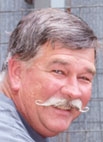
On a Monday in early October, 40 people met at the Pauline Whitaker Center in Fayetteville, Ark., for the seventh Moms on the Farm Tour.
The event was sponsored by the Arkansas Beef Council with Donette Spann from Little Rock, Ark., representing the organization. The purpose of the twice-yearly event is to offer an opportunity for those who have never been on a farm a face-to-face experience with dairy and beef production in the area.
“We strive to present people living in our diverse area with accurate information from ‘hoof the plate’ so they are better informed about the origins of their food and safety precautions in preparation,” Geneice McCall, a member of the Arkansas CattleWomen’s Association explained.
The idea for the program came from Janeal Yancey, a meat scientist from the animal science department of the University of Arkansas Division of Agriculture. When visiting a friend South Dakota, she was introduced to a similar program. She organized a meeting of interested parties from Farm Bureau, the Division of Agriculture and Arkansas CattleWomen, which then planned the event and collected money needed to start the program – with some coming from private donations. While only 12 visitors signed up the first year, numbers have increased to a high of 42. The program is constantly being tweaked and now includes a vocabulary sheet with terms such as “heifer” and “milk parlor,” to help attendees get a better understanding of life on the farm.
“One of the changes since we started is inviting anyone over 16,” Janeal said. “We now have stay-at-home dads and other fathers attending as well.”
The first stop on this fall’s tour was the Hart Dairy in Prairie Grove, Ark. The dairy milks 125 cows with milk being picked up by Hiland Dairy in Fayetteville, Ark. Each batch is tested for a variety of qualities including the presence of antibiotics, mastitis and butterfat percentage. The dairy is also visited by an inspector monthly who can help identify the source of a potential problem.
Guests were treated with visits to the milk parlor and a barn holding young calves still needing to be bottle-fed. Owner John Robert Hart allowed cows to enter one side of the dairy parlor while feed was being deposited in each stanchion for a cow to eat while being milked. The cows’ udders were cleaned, by hand, before an automatic milker was attached. He allowed several visitors to feel the suction and explained the milking process. Attendees were surprised by the size differentiation between the udders before and after milking.
The calf barn was the next stop.
Calves eagerly approached visitors hoping for a bottle. Two of the visitors allowed the calves suck on their fingers to the group’s delight.
“Milking looks simple but is really complicated. Dairy farmers have to work hard every day because milking and feeding calves can’t wait,” DeDe Berger of Fayetteville, Ark., said.
The next stop was Willow Springs Ranch, which was selected for the diversity of operations.
Owner of the cow/calf and stocker operations, Larry Walker, started the tour by explaining the ranch and the meanings of cow/calf, stocker and seed stock production. Next Cody Green, who works with the seed stock operation, explained that the animals were washed and groomed twice daily, treated to air-conditioning in the summer, and had soft Astroturf under their feet when in the barn to keep their hooves dry and to present possible slipping on wet concrete. Next, visitors were allowed in the calf pens to approach the pampered animals.
“The passion these farmers have is amazing, and I will always look at food differently now,” Fayetteville, Ark., resident Callie Breeden said.
Finally, the group returned to the Whitaker Center for lunch and two presentations.
The first was by LeAnn Hooks from Riceland Rice, a 90-year-old family cooperative with 56,000 members. One of the most informative parts of her presentation was explaining that brown, long grain, gold and parboiled rice come from the same plant but are processed differently resulting in various degrees of nutrition and specialized uses.
Next, Wendy Pettz from the CattleWoman’s Association prepared and served samples of two beef dishes, one with an Oriental flavor and another with an Italian profile. She explained that choice grade top sirloin is necessary in stir frying for sufficient tenderness and that hamburger in restaurants should always be eaten well done because of handling.
“Many healthy dishes can be quick and loaded with flavor which helps today’s busy families,” she said.
Among the most frequent questions during the tour related to how optimal animal body composition is achieved and the use of growth hormones.
Dairy, beef and poultry representatives adamantly agreed that results come from good genetics.
“Modern chickens with their large breasts come from selective breeding and not growth hormones,” Casey Owens-Hanning, associate professor of poultry science at the University of Arkansas, explained.







